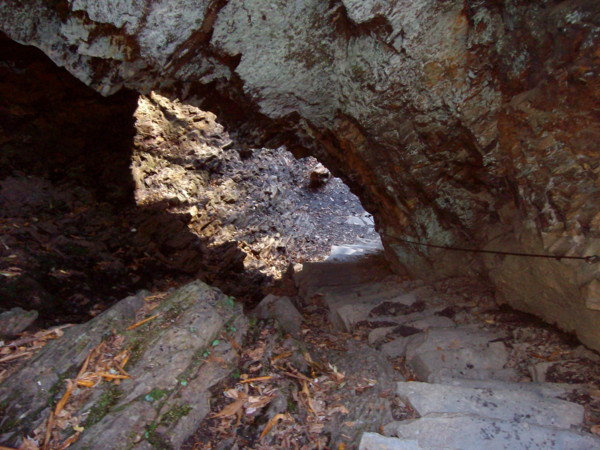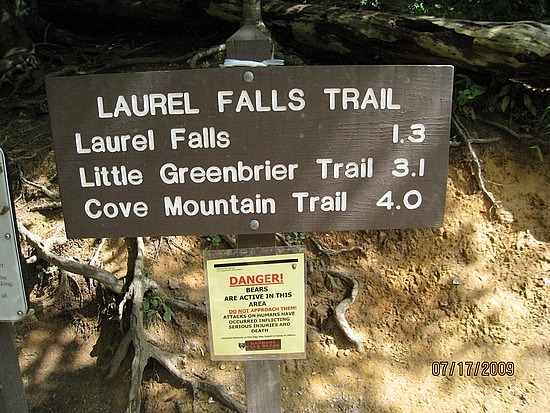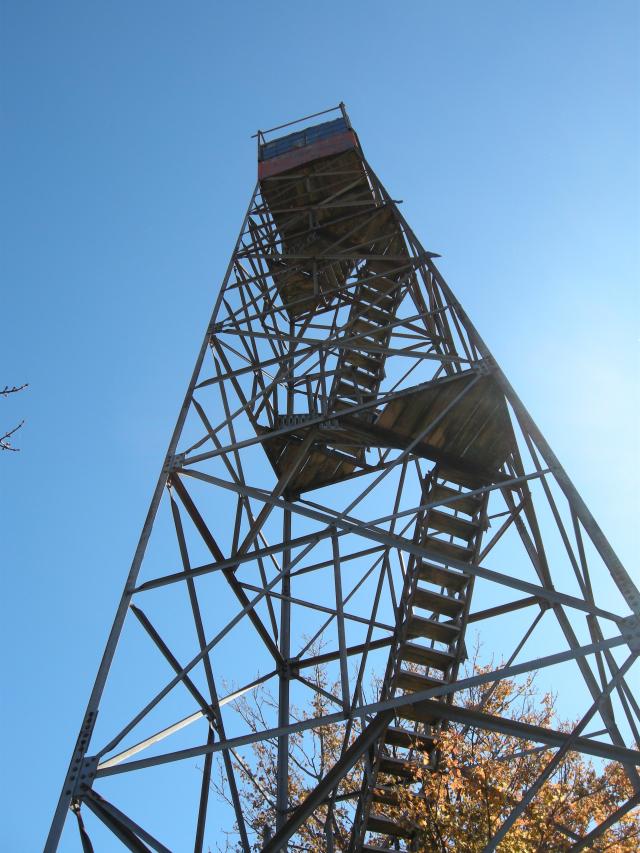From the Sugarlands Visitor Center, drive 8.6 miles east on Newfound Gap Road. There you will find two parking areas, where a gravel path leads to The Grassy Patch and the beginning of a 2.3 mile hike to Alum Cave Bluff.
Summary: This moderately difficult hike is 4.6 miles round-trip or 5.1 miles on to LeConte Lodge. The round-trip to the cave bluff takes about 2 and 1/2 hours, but allow about 3 and 1/2 hours to LeConte Lodge. The Alum Cave Trail is the most popular and well-known route to Mount Le Conte.
Elevation: You gain 2600 feet on the way to 6400 feet.
Features: Arch Rock, 1993 summer storm damage, Inspiration Point, Alum Cave Bluff
Mother Nature’s majesty and power are clearly demonstrated in this 4.6 mile (round-trip) hike. The views are great, particularly if you go on to LeConte Lodge and Cliff Tops, and the trail is not too difficult–even for children. To demonstrate, I recall an early visit (I was much younger and more fit) when I carried my sleeping daughter on my shoulder for the majority of the first half of the hike.
You’ll begin this hike at the Grassy Patch just off the parking area. Shortly after entering the forest, you will parallel the Alum Cave Creek for approximately a mile and then follow Styx Branch, a main tributary of Alum Cave Creek. A few hundred yards beyond this point, you’ll see the boulder and log remains of a 1993 flash flood and landslide on your left. A heavy thunderstorm dumped several inches of rain, with a force so great that huge boulders were exposed and tossed–its path is clear to the hiker and will remain so for years. At mile 1.5 you come to Arch Rock, where a set of stone stairs aids your passage through one of the few natural arches inside the park. At the 1.8 mile mark you will come upon Inspiration Point, affording the first panoramic view of the area. Thereafter, you’ll pass through an area of low shrubs, and shortly thereafter arrive at Alum Cave Bluff (mile 2.3). Alum Cave is not what the name implies. Its not a cave–rather it’s a jutting ledge of black slate, forming out over the trail to give the impression of a cave. The name Alum Cave comes from the deposits of alum found along the “cave” walls.
For the hardy souls who will continue on to LeConte Lodge, the trail curves up and around the bluff and begins following the ridge that forms the southern flank of Mount Le Conte.
Two hundred yards from it’s finish at Le Conte Lodge, the trail is joined from the left by the Rainbow Falls Trail. Le Conte Lodge consists of several wood-shingled cabins, two lodges, and a dining room. There is no electricity and water is pumped into holding tanks from a spring. The lodge uses llamas to haul in supplies (that’s a story for a future issue!). Reservations can be made at LeConte Lodge by calling (423) 429-5704.
Above the lodge you’ll find Cliff Top, one of the best vantage points in the Smokies–when the view is not obscured by misty clouds.
If your trek to Alum Cave Bluff is a day-hike, take a knapsack and carry a few extra items. Include some bottled water and a snack. Never drink the water from a Park stream without boiling it first. Though the streams in the park are invitingly cool and deceptively clear, they contain bacteria that can wreck your trip and a substantial period thereafter, if you succumb to the temptation to drink from them. You might even include a camera in your knapsack too. If you are making an overnight trip to LeConte Lodge, you’ll be carrying a backpack, and we assume here that you have included all the necessary items and arranged for the required reservation at the lodge. A backcountry permit is required for overnight stays in the backcountry. Certain campsites are reserved in advance. Permits are available at visitors centers or by calling (865) 436-1231.






 this ridge, and the tower is made to give a little. From the top of the tower, you’ll be awarded a spectacular 360-degree view, with mountains in all directions. The Unicoi Mountains can be seen to the west, the Snowbird and Nantahala Mountains to the south, the Blue Ridge Mountains to the southeast, and the Smokies to the east and north. Remember looking up at the tower as you walked across Fontana Dam? From this vantage point, you’ll be able to make out the dam and all of the land you covered on your way to the tower. You’ve covered about three and a half miles and climbed over two thousand feet. It’s a rewarding feeling indeed. To return to your car, simply descend from the tower and return the way you came.
this ridge, and the tower is made to give a little. From the top of the tower, you’ll be awarded a spectacular 360-degree view, with mountains in all directions. The Unicoi Mountains can be seen to the west, the Snowbird and Nantahala Mountains to the south, the Blue Ridge Mountains to the southeast, and the Smokies to the east and north. Remember looking up at the tower as you walked across Fontana Dam? From this vantage point, you’ll be able to make out the dam and all of the land you covered on your way to the tower. You’ve covered about three and a half miles and climbed over two thousand feet. It’s a rewarding feeling indeed. To return to your car, simply descend from the tower and return the way you came.